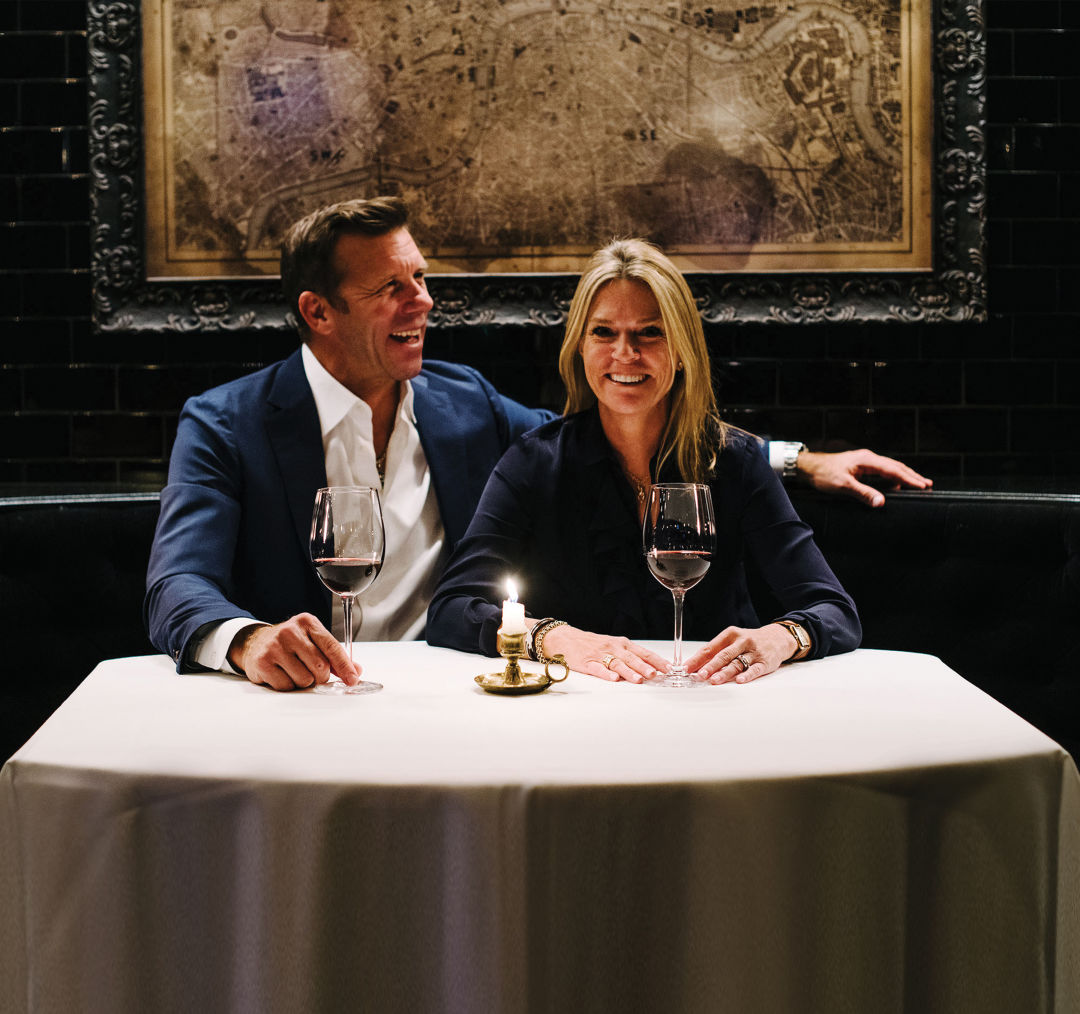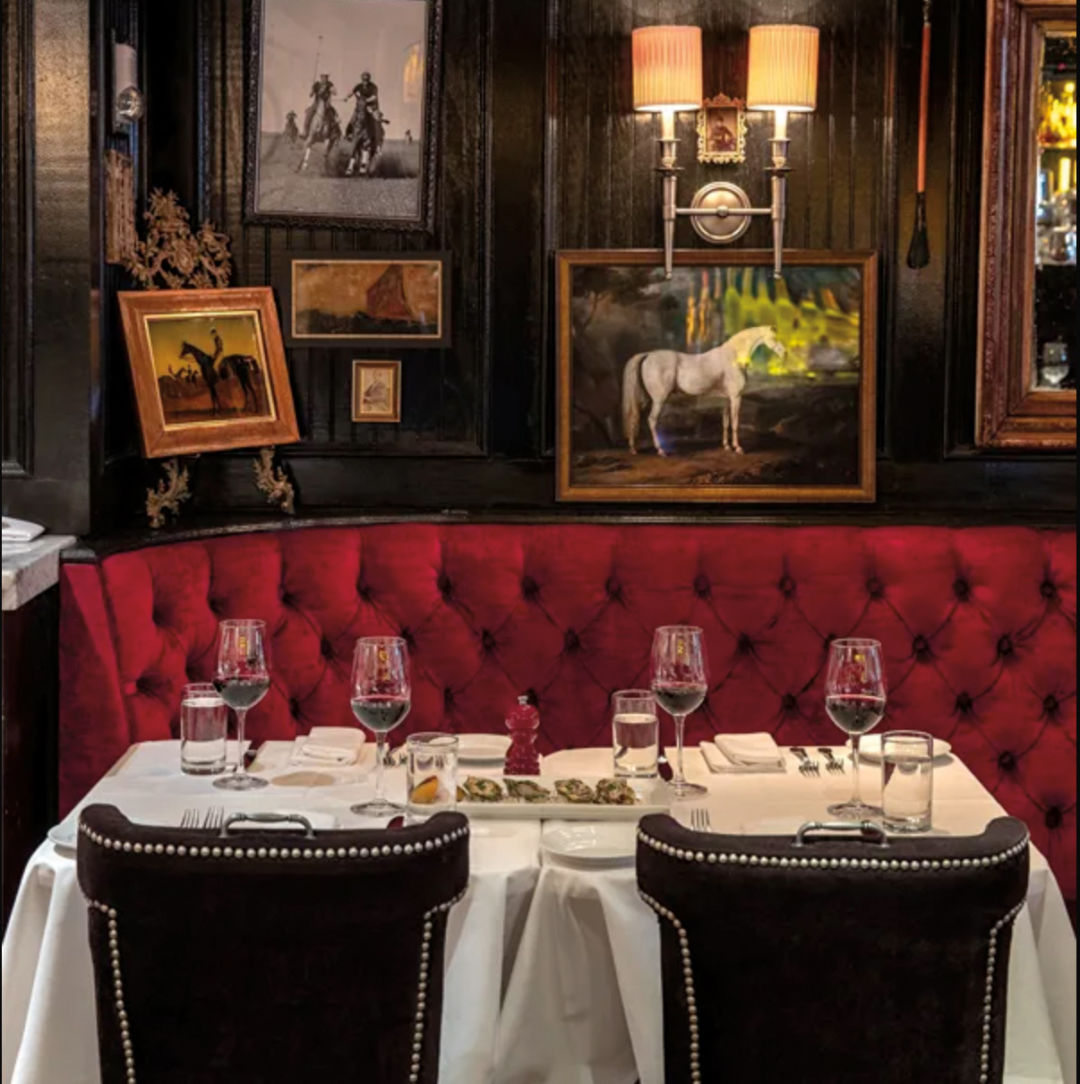Local Culinary Landmarks Hope to Outlast the Trends

CP Restaurant Group’s Craig and Samantha Cordts-Pearce
The number 19 means something fierce to Craig and Samantha Cordts-Pearce. The Aspen-based restaurateurs were married on that date 22 years ago. Their son was born on a 19th, their business partners found love on a 19th, and the Cordts-Pearces opened the Wild Fig on December 19, 2003. The number had become so significant that when, in 2005, the couple launched their second (now closed) restaurant, they named it D19—short for Dates on the 19th. “It’s a good number,” says Samantha. “Well, until Covid-19, that is.”
Now the couple is actively chasing down their 19th year as restaurant owner-operators (the official anniversary is October 2022). Nearly two decades in the business (and 30 as residents) give the Cordts-Pearces a wide lens with which to process the changes affecting Aspen’s restaurant economy.
But first, their success comes from knowing and understanding the town as only locals can. “We worked in the town for a long time; we worked our way up in the town,” Samantha says, referring to a career with stopping points at the original Shlomo’s, The Tippler, Smuggler Land Office, Matsuhisa, and others. Craig’s résumé includes the Caribou Club and Campo de Fiori. And when you know the scene from the inside out, you know its strengths and weaknesses; you know what it craves. “Before [we opened] Steakhouse 316, there used to be an old-school spot called the Steak Pit. And remember the Chart House? Those were gone. Most high-end restaurants had steak on the menu, but there wasn’t a steak house. There was a need,” Samantha says. Again assessing what Aspen needs, 316 is one of the very few restaurants to bring back an affordable bar menu after the shutdown. “Out went the affordable meal with Covid,” Samantha says. “Prices have to go up—I mean, crab legs are $67 a pound right now—but we still did it, we brought the bar menu back. You want to be able to go out in your own town.”
Couple inside knowledge and good business practices with good instincts, and CP Restaurant Group has grown into a local force with six restaurants under its umbrella: The Wild Fig, CP Burger, The Monarch, Steakhouse No. 316 in Aspen and Boulder, and most recently the Woody Creek Tavern. The restaurant group also manages the ice rink and mini golf course adjacent to CP Burger’s patio.
When the beloved 40-year-old Tavern came up for sale in 2019 (another 19!), the Cordts-Pearces saw the purchase as an opportunity not just to own an important piece of the valley’s history but also to safeguard it. “We’re 30-year locals who bought it to protect it,” Samantha says. “It could have landed in the hands of a big-city restaurant group.” And that right there is the stark reality of Aspen’s modern dining scene. With so much money at the disposal of investors and developers, the strength of the town’s independent restaurant industry—where much of Aspen’s personality is on display—is beginning to fray.

Steakhouse No. 316
Image: Courtesy CP Restaurant Group
Over the years, more and more big-name restaurants have opened in spaces that used to be locally owned. The most recent glaring examples are those of Jimmy’s and Little Annie’s, which were both bought by Texas-based McGuire Moorman Lambert Hospitality. But there are also quieter cases, like Nobu’s Matsuhisa and Hillstone’s White House Tavern, that over the years have woven their way into the local scene. Newcomers like Casa D’Angelo and Felix Coffee Roasters, both of which opened this summer, might bring more choices for the tourists, but at what cost?
When money talks, it puts many local restaurant operators on high alert. There are stories of investment groups culling through leases to see which ones are coming up for renewal—and then swooping in with sky-high offers that landlords have a hard time refusing. But what happens to a town when—and this is not unique to Aspen—it loses a grip on who and what it is?
“There are still a lot of local people who came up through the ranks—Chris and Jodi at Cache Cache, Wendy of Meat & Cheese. All of us though the pandemic—Jimmy included—came together; we were the fabric that tried to keep things together,” Samantha says. “This will be a shift. Who is the restaurateur? Who is on the ground? We’re owner-operators.... Who are the new faces coming in?”
An out-of-town restaurant group opening an outlet in Aspen just for the cachet of it—with the usual promise of an experience that will appeal to the locals—leads to many an eye roll valleywide, but the money is real, and its effects are, too, both bad and good. “My father had shoe stores in New York for 36 years. There were so many shoe stores on the street—that’s where everyone went,” Samantha notes, likening that dynamic to Aspen’s magnetic restaurant scene. “If there’s great shopping here, people come. If there are great restaurants here, people come.”
Elizabeth Plotke, owner of the 27-year-old Campo de Fiori, thinks the infusion of shiny new restaurants might, in the end, result in a rebound effect. While newcomers might cultivate a following at first, she says, ultimately sky-high menu prices and less personalized service will lead a majority of diners right back to the local spots. “We’re part of the personality of the town. I think the love for the locals and the local restaurants and who we are as a community will show off even more so.”
Restaurateurs like the Cordts-Pearces and Plotke create their restaurants to fit the town and the respective buildings—these businesses are literally infused with local personality. “We listen to the space,” Samantha explains. “We design and build [our restaurants] ourselves, we design the menu ourselves with our chef, we don’t outsource our restaurants, we don’t get a designer.”
Because the Cordts-Pearces are here for the long haul. With 19 years glimmering on the horizon for the couple, here’s hoping that two decades begets another—for them and a multitude of others.













































